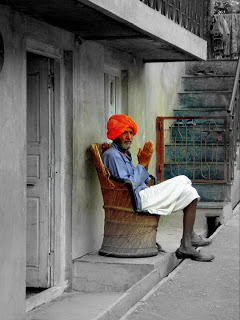 |
| Padharo Mhare Des. Photo: RS |
Our travel itenary had four major places in mind- Bundi, Jalore, Bikaner, Hanumangarh- essentially in this order. One of our team mates hailed from the royal land and thus the language was never a trouble on our way. Thought the place is too friendly as the people are more than willing to guide you even if they are unaware of it themselves.
As many of us suffered from motion sickness we decided to drudge for a car. It was quite a drive into nice two lane roads merging into dirt streets with pot holes almost as big as our car, and everything in between.
A cycle rider was so excited to see our Innova that he invited himself to lead us and we were to follow. He later offered us the soothing masala chai with him. After approximately 8 hours of drive the majestic ruins of the old city fort at Bundi welcomed us.
The most distinguishing topographical significance of this place was the twin hill running in the north east and south west directions. The cycle rider told us that Bundi is one of the most privileged places in terms of water resources.
So, the gap between the haves and have nots was being completed by a special initiative. Train is trying to solve the water crisis of the place. Pali, Dungarpur, Rajsamand, Barmer, Nagaur, Jhalawar are some of the regions getting water from train.
Architectural blue prints, drawings with infinite geometrical structures, make little or no sense to a layman. But, when we see the paper plan put to reality, we know what went in it. The architectural art of the bygone era makes a wonderful archaeological sight in this region.
The first step well I saw was Raniji-ki –Baori, the monsoons were as always less favourable so the water level was pretty low. The guide told us that the 46 m deep stepped well with a high arched gate was built in 1699 A.D. by Rani Nathavatji. It is adorned with some superb carvings on its pillars and. This well is one of the largest of its kind.
Food and photography kept us busy all this while. The place offered us a quiet and colourful stay. Most of us were vegetarians and thus it was a paradise for us. The menu card ranged from ker sanger, gwarpatha (aloevera), keriya and gattey ki sabzi. It was too good to believe.
After spending a good three days in Bundi we hired another car, this time a Wagon R to Jalore and began the second phase of journey. It was a 7 to 8 hour journey with stoppages. Our speed was to see the mirage magical metal borne roads. The barren dunes moved as our car brisked through blazing sun and superb highways.
We stopped at Udaipur and Chittourgarh for a while. But as our aim was to discover the less discovered bits of the royal land, we decided to move on. Chittorgarh, the sight of Rajasthan’s biggest fort.
Thrice in its history the fort was sacked, and all the times it met certain defeat and death, while all the women and children immolated themselves on a huge funeral pyre following a declaration of jauher. The first defeat happened in 1303, when Ala-ud-din, the Pathan king of Delhi, besieged the fort in an attempt to capture the beautiful Rajput Rani Padmini.
 |
| google images |
In Udaipur many lakes had dried and we were really taken aback to see the beautiful ruins invoking strange void in our hearts. The land suffers from a weird at the same time mysterious ‘abundance-absence’ syndrome. Some parts are claustrophobically crowded while the loneliness of the rest freaks you out.
The abundance of water in some regions and the complete absence in others is also another example of the aforementioned syndrome. The shades and bandanas saved us from the searing heat. But, ironically the overly dressed women did not seem to feel it.
Their tanned skins, ivory bangles and heavy black and red mirror work cholis had a blinding effect on my eyes. They seemed almost divine to be facing the scorched environs of the land. The big colourful turbans and moustaches called for respect and honour for the blue blood.
Water reservoirs then and now
On our way we stopped and inspected a few Johads in small villages but, found them all to be dried. The people reported that the natural water supply is available once a day and at times even that is not possible.
Jalore fort from a rocky outcrop 336m (1,200 ft) high fortified with a wall and bastions with cannon mounted upon them is the striking feature of the place. Now desolated, the mahal ‘or the residential palace’ inside the fort is the ruined symmetrical walls with huge rock formations around it.
Two considerable Baoris including Jalar Baori (step well), chhatris (cenotaph), Charan Paluka and the Bhairon Dev Ki Chowki within the fort are the other structures that have survived the brunt of time. A land so dry that the skin cracked and so did the land below us. Despite the heat above the land, the stepwells were soothingly cool as if an Air Conditioner was fitted in it. It protected us from any heat stroke. A pleasant break from the usual heat wave we had been through.
The people informed us that the oldest step well was at Abhaneri in Jaipur. It is a village located 90 kilomteres from Jaipur. It refuges two classical water buildings in a single setting. But, as we were earlier not aware of the magnificence, we regret missing it.
Even in this decrepit state the Rajasthan water tanks are a socio ecological and economic marvel. The stepwells in Rajasthan range from north of Aravalli hills to Thar desert. The main forms of such storages are-
Kuan- Well. A traditional source of water preservation and hub of social interaction especially for women.
Johads– A centrally located is a traditional pucca rainwater storage tank, mainly used for drinking purposes in a village. Johads are called as “khadins” in Jaisalmer. They are popularly known as tankas in most parts of the country.
Talai- natural reservoirs of water
Kund- rain water reservoirs constructed within the homes.
Baori- Baoris or Baolis are unique to India, were used as royal baths, reservoirs and provided respite from the summer heat to the kings and the queens.
Step wells lead to a moment that joined the sun and the water. It was a moment captured through lens and also through eyes. The cracked lands mocked us when we used bottled water to beat the heat.
I can never forget the ghastly sights of disability cases emerged out of water borne diseases. The major problems that lead to devastation of such reservoirs were the embryos of guinea worm found contaminated with and the users of which caused significant cases of Dracontiasis.
By the time we finished documenting these stories we were to move. Everyone was reluctant but Buses at night were like steering through the darkness to the land of palaces in Bikaner.
We boarded a bus till Jodhpur which was just 3 and a half hours from Jalore. From Jodhpur we boarded a train to Bikaner and were welcomed by the busy suffocating streets.
Modernity dawns the deserts
The streets that screamed of commercialisation with Vishal Megamart near the railway station. Also, the best bit was the mirchi vadas, kachodis and bhujiya. We savoured it all after the night long journey. From the Chotu Motu Joshi mithai shop.
The localite with us made us buy bhujiya from Babulal Bishanlal. The lip smacking spicy treat send many of us to recurring nature calls. But, it was fun anyway.
We hired bikes- Royal Enfields to tour the city. It was awesome but scooty seems to be a usual sight here in Rajasthan. We saw women wrapped up in dupattas to save them from heat. Thus, we decided to follow the herd.
Shiv Badi was the first dried step well we visited at the Shiv mandir in Bikaner. The greenery there was a surprising after Jalore’s barren lands. We also visited the outskirts of the city where Sood Sagar an earlier dried pond, now restored to a picninc spot was unusually beautiful. It broke the stereotypical Rajasthan image in our minds.
Our last stop was at Hanumangarh – Kalibanga, all thanks to the history student amongst us. We were almost forced to visit the ruins of Indus valley civilization now restored to its beauty because of lift canal.
The situation a present is not great but, such cases have given a ray of hope. We were informed that the water crisis is worsening and so is the crop harvest. The kunds at home are no longer desired by the owners at they consider it risky and its maintenance is more of a hard work they do not want to indulge in.
The hydraulic systems fascinated us so much and opened the world that was much more concerned about the crisis than the present generation. The universality of water crisis has struck us. Earlier the buildings were made of mud, then wood. Later the wood buildings feared destruction from fire, were replaced with blocks of sand stone introduced long lasting temples. These proved ideal for water buildings.
We got to know that wells could be as deep as 9 levels from ground level like the Neemrana Ki Baori, but most Step wells are four or five stories deep with sheltered landings at each level. To restore their dignity with their real purpose in mind, we should save every bit of water.
The preciousness of water is not restricted to the chocolate topped slopes of Rajasthan. The journey was an eye opener for us.
PS: In Rajasthan availability of water is a privilege and thus water reservoirs of various kinds – kuan, johads, baoris, talais, kunds – are an important feature of this semi-arid desert land. Ironically these architectural excellences, now dried up, serve as mere tourist attractions rather than serving the real purpose.
Rajasthan is India’s largest state with a surface area of 3.42 lakh sq km constituting 10.4 percent of India’s surface area, it had only 1.4 percent of the country’s water resources. According to official data, out of 237 blocks in the state, 164 blocks had exhausted their ground water table by 2008.
Entry for: The perfect road trip facebook.com/AmbiPurIndia
Entry for: The perfect road trip facebook.com/AmbiPurIndia
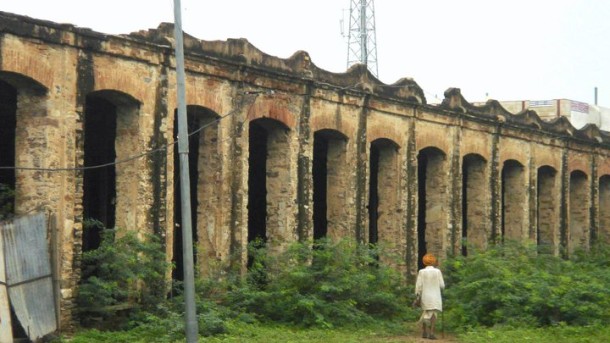
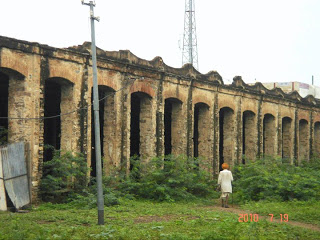
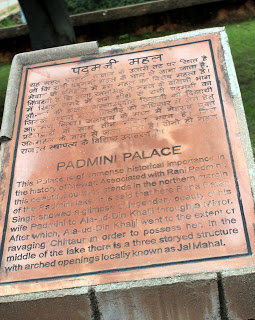
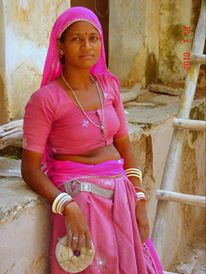
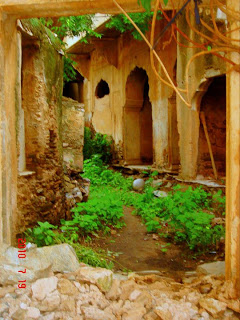
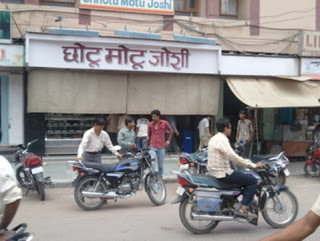
A road trip with social concerns woven into it is a good idea. Loved reading what you had to say about the cities of Rajasthan.
Arvind Passey
http://www.passey.info
A very different take on travelling – highlighting not just the romance involved, but also the social concerns! Best of luck for the contest! 🙂
@arvind Thank you so much. As always you are kind.
@Solitary reaper. welcome aboard. thanks for appreciating